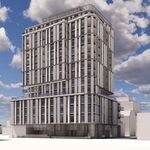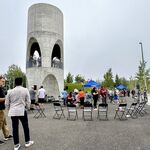Remember, there are a lot of people that would willingly take the TTC tomorrow if they didn't have to wait for 2-3 trains to pass them. Once the capacity is made available, the TTC will fill up, and Quickly.
It'll be interesting to see what happens to subway crowding patterns, that's for sure. The official expectation used to be that, once ATO comes online next year, providing a peak capacity of 36,000 pphpd, Line 1 will have capacity to spare until around 2031, where it will again be roughly at capacity. We see this reflected in the Metrolinx Yonge Relief Network Study, where they expected the Yonge Line to have a volume/capacity ratio of 89% in 2031
However, in the City of Toronto's later
SmartTrack Ridership Forecasts Report, it's expected that in 2031, the Yonge Line passenger demand will be significantly above the capacity of 36,000 pphpd (See Base case). That means that any extra capacity provided by ATO in 2019 will be almost immediately absorbed by induced passenger demand.
Personally, I'd bet that the modelling is significantly underestimating how much latent transit demand there is on the Yonge Line. The line will move more people in the future, but it will likely be just as crowded as today.
Finally, I'll add that this will likely have implications for the Yonge North subway extension. What happens when ATO comes online next year, and we discover that the Yonge Line didn't have as much capacity as we thought it would? How would that affect the YNSE timeline?






